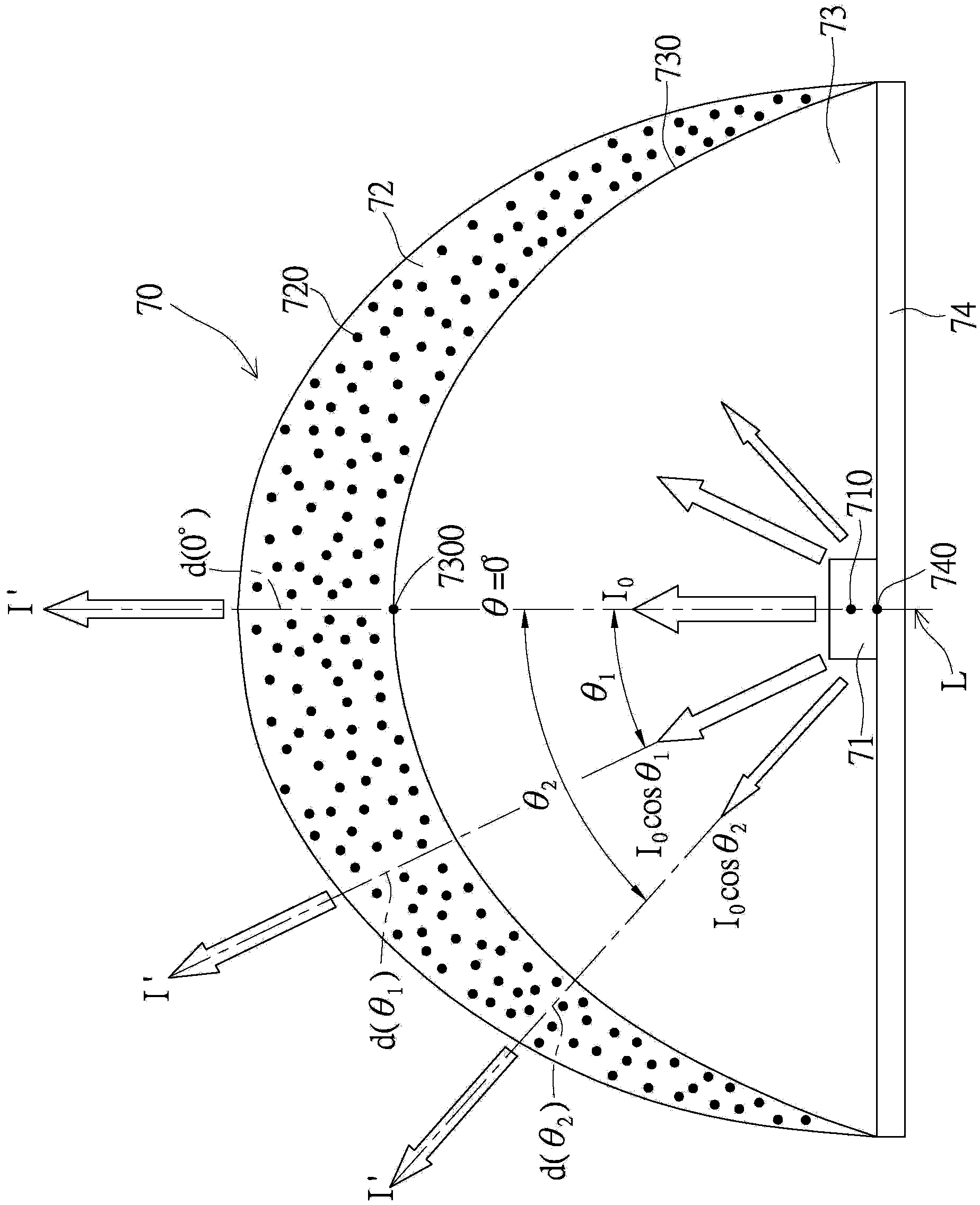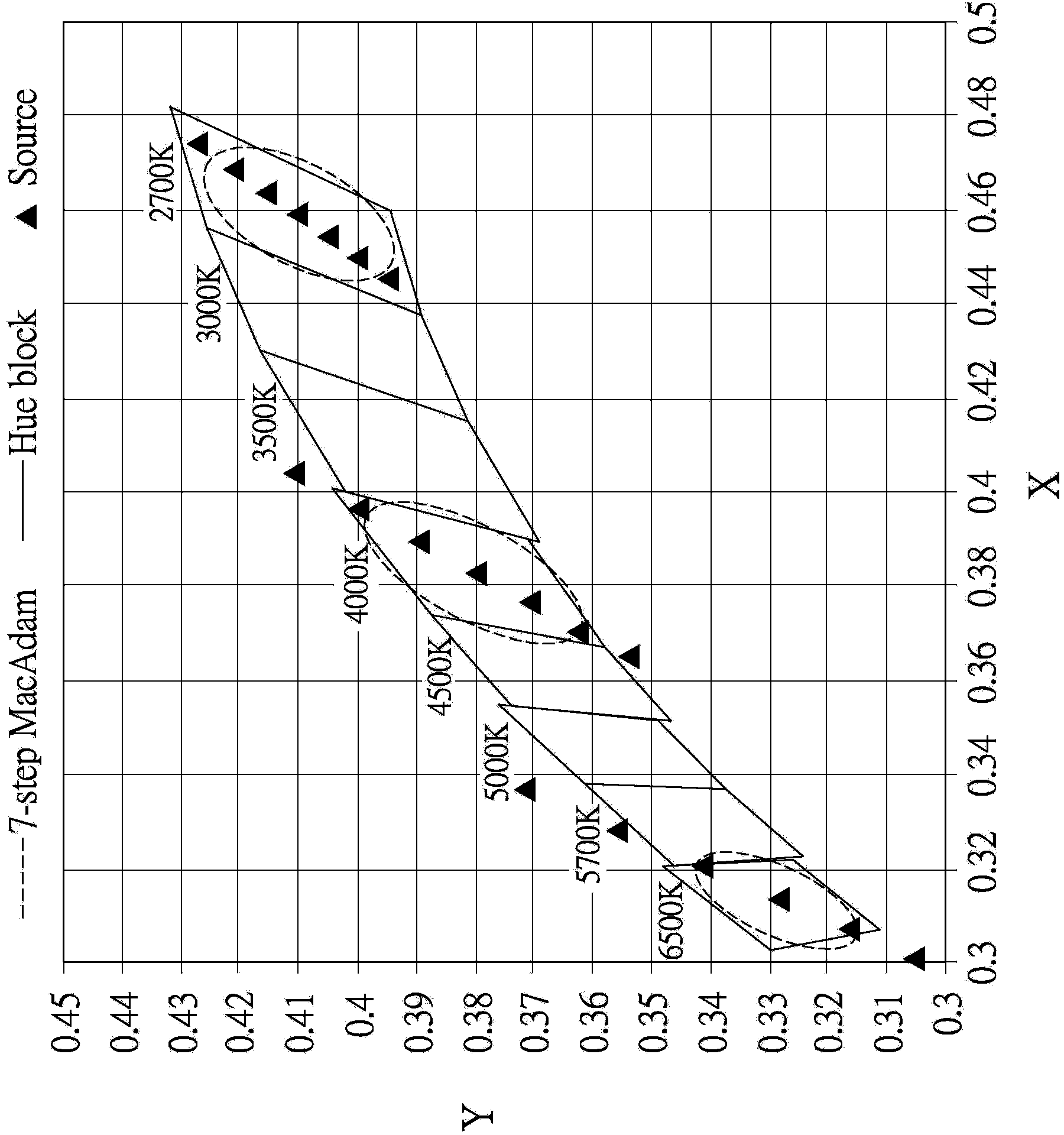Illumination device
A lighting device, a progressive technology, applied in the direction of lighting devices, lighting device components, lighting and heating equipment, etc., can solve the problems that the luminous intensity cannot be provided, the light source cannot provide luminous intensity, etc., and achieve the effect of uniform luminous intensity
- Summary
- Abstract
- Description
- Claims
- Application Information
AI Technical Summary
Problems solved by technology
Method used
Image
Examples
no. 1 example 〕
[0045] see Figure 1A As shown, the first embodiment of the present invention provides an illumination device 70 , which includes: a base 74 , at least one photoelectric element 71 , a first layer 73 and a second layer 72 . In this embodiment, only one photoelectric element 71 is used as a light-emitting module, but in different variations of different embodiments, multiple photoelectric elements 71 can also be used as a light-emitting module at the same time, so this embodiment does not use a photoelectric element The number of 71 is used as the limitation of the present invention. Furthermore, the photoelectric element 71 is disposed on the base 74 and is electrically connected to the base 74 for generating a first light with progressive luminous intensity I(θ) (such as Figure 1A Indicated by the arrow projected from the photoelectric element 71 ), and the progressive luminous intensity I(θ) may show a trend of gradually decreasing from the top of the photoelectric element 7...
no. 2 example
[0092] see Figure 2A As shown, the second embodiment of the present invention provides a lighting device 80 using only one photoelectric element 81 as a light emitting module. The illuminating device 80 of the second embodiment is similar to the illuminating device 70 of the first embodiment, and the biggest difference is that the progressive structure adopted by the second embodiment is the progressive concentration of the phosphor powder mixed in the second layer 82 D(θ), same as the first embodiment, also corresponds to the progressive luminous intensity I(θ) of the first light.
[0093] Furthermore, both the progressive luminous intensity I(θ) of the first light and the progressive concentration D(θ) of the phosphor powder in the second layer 82 can simultaneously show an increasing or decreasing trend corresponding to each other ( That is to say, there is a positive correlation between the progressive luminous intensity I(θ) of the first light generated by the photoelec...
no. 3 example
[0127] see Figure 3A As shown, the third embodiment of the present invention provides a lighting device 90 using only one photoelectric element 91 as a light emitting module. The lighting device 90 of the third embodiment is similar to the lighting device 90 of the first and second embodiments, but the biggest difference is that the progressive structure adopted by the third embodiment is the fluorescence of the phosphor powder mixed in the second layer 92 The progressive particle radius R(θ) of the particles 920 is also corresponding to the progressive luminous intensity I(θ) of the first light as in the first and second embodiments.
[0128] Furthermore, there is a correlation between the progressive luminous intensity I(θ) of the first light and the progressive particle radius R(θ) of the phosphor powder in the second layer 92 . For example, when the progressive luminous intensity I(θ) of the first light shows an "increasing" variation trend, the progressive particle radi...
PUM
 Login to View More
Login to View More Abstract
Description
Claims
Application Information
 Login to View More
Login to View More - R&D
- Intellectual Property
- Life Sciences
- Materials
- Tech Scout
- Unparalleled Data Quality
- Higher Quality Content
- 60% Fewer Hallucinations
Browse by: Latest US Patents, China's latest patents, Technical Efficacy Thesaurus, Application Domain, Technology Topic, Popular Technical Reports.
© 2025 PatSnap. All rights reserved.Legal|Privacy policy|Modern Slavery Act Transparency Statement|Sitemap|About US| Contact US: help@patsnap.com



